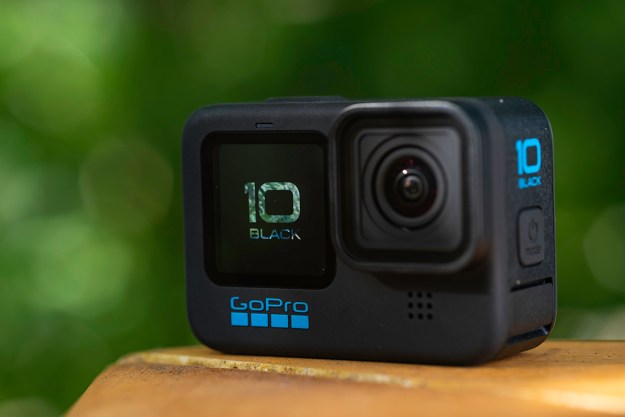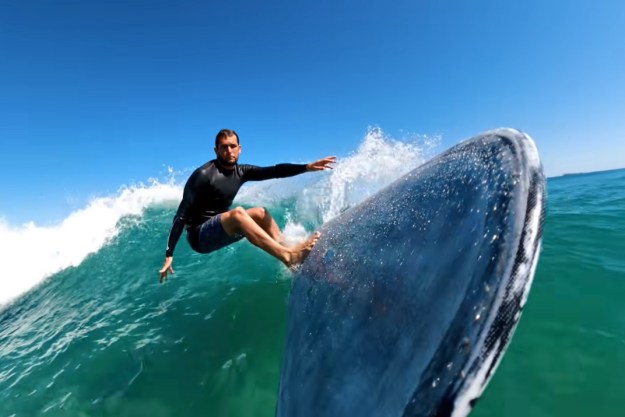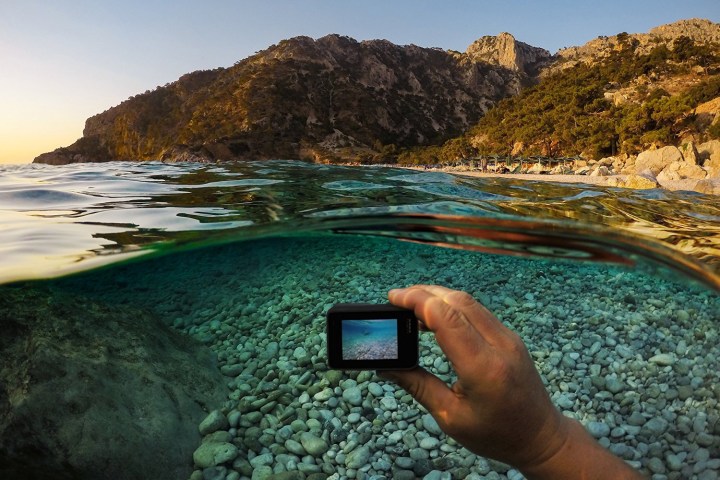
Things have changed quite a bit since GoPro shipped its first product — a wrist-mounted 35mm film camera — in 2005. Now, long after moving to digital and having gone through multiple generations of cameras, adrenaline junkies all over the world have flocked to GoPros for their versatility and durability.
From a supersonic skydive from the stratosphere to your morning bike commute, a GoPro is the perfect camera for capturing whatever your most exciting adventures are. But what about all those nifty GoPro videos you see online that have the production value of a Planet Earth episode? While many of those possess a bit of professional postproduction, there’s still a few GoPro tips and tricks we recommend employing to turn your basic videos into masterpieces. These won’t necessarily make the Academy come calling, but, hey, you need to start somewhere, right?
Use a mount
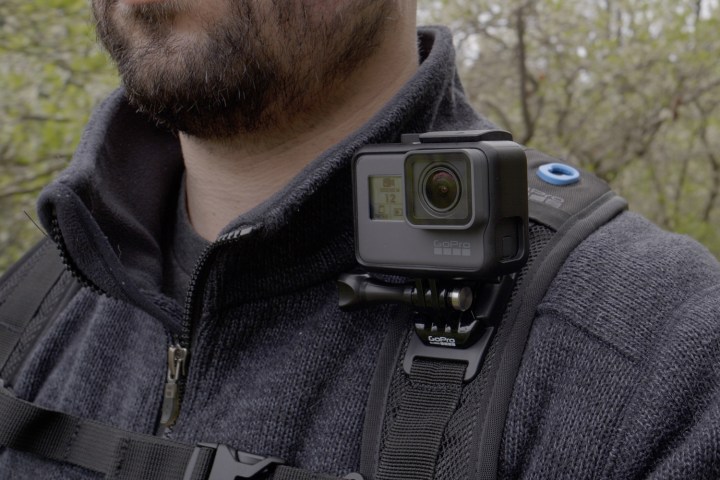
This is perhaps the single easiest way to spice up a GoPro video, and can definitely make things more exciting. Fortunately, there are literally hundreds of different mounts available on the market, and a nearly infinite way to mount them. Whether you opt for a helmet or chest mount for filming mountain bike and snowboarding excursions, or decide to procure a tripod for stable stationary shots, a mount is always a good idea.
We also recommend testing out different places to mount the camera to determine which spots work best for producing smooth shots, correct angles (more on this below), and all of the desired action. Different mounts can provide different POVs, which can help tell the story you envisioned.
Beyond GoPro’s broad array of first-party mounts, there are plenty of third-party options, as well — you have no shortage of choices.
Find a new angle
A GoPro offers a very wide angle of view that makes it easy to capture the action, but to create truly interesting videos, you should do more than simply set it and forget it. To illustrate a sense of speed, placing a GoPro closer to the action can really help. As mountain bike YouTube channel the Loam Ranger explains, a GoPro strapped to your chest can lead to much more dramatic footage than one mounted way up on your helmet, as it puts your perspective closer to the ground.
We also recommend trying a mix of different camera positions to give viewers a comprehensive view of what’s going on, rather than just sticking to one viewpoint. For example, when recording action, it’s most common to mount a forward-facing GoPro, but sometimes looking back at yourself can produce equally entertaining footage. Even if you have just a single camera, if you’re going to be repeating an action many times throughout the day — say for surfing or snowboarding — consider repositioning the camera on each run to capture a greater variety of shots that can be edited together later.
Newer GoPro cameras offer a selection of crop modes, such as an ultrawide 170-degree angle of view, a medium 127 degrees, and a narrow 79 degrees. The Hero6 Black and new Hero7 Black even have touch-to-zoom functions that mimic a traditional zoom lens. Making use of different fields of view is another way to mix up your shots. And don’t forget — you can even mount your GoPro upside down and it will automatically flip the footage to display it the right way.
Here’s an easy way to remember which field of view you should pick: If you’re unsure of your framing and want to know that you’re getting all the action, go for ultra-wide. The narrower fields of view are good when you have more control over your framing and want to hone in on a particular subject or area of the scene.
Use filters to improve video quality

We aren’t talking about Instagram-like retro color filters or any other digital effect — we’re talking about actual physical filters that you can place in front of the lens to alter the light your GoPro sees. A host of GoPro filters are available to choose from, like this collection from Polarpro, but there are a few types worth drawing attention to.
A neutral density (ND) filter works wonders when filming in bright environments by allowing for a slower shutter speed, which keeps footage looking smooth and natural. Essentially sunglasses for your camera, an ND filter simply limits the light passing through to the lens.
A polarizing filter is useful for cutting out reflections on glass or water, and can help your GoPro see through the surface of a lake or the windshield of a car.
And if you actually want to film underwater, a red or magenta filter will help remove the blue-green colorcast inherent to that environment. These filters are often found in sets, and the one you should use depends on they type of water and how deep you’ll be diving in it.
Hold steady
The Hero7 Black features revolutionary electronic image stabilization, but as impressive as it is, using an external stabilizer still has its benefits, whether you need a static shot or a moving one.
One of the best things about GoPro cameras being as ubiquitous as they are is that third-party accessories are equally common. For stationary shots, nothing beats a good-old tripod when it comes to stability. As a GoPro is very light weight, there’s no need to get a heavy duty set of sticks for it, but do consider a tripod with a fluid pan head. This will let you make smooth pans to follow a subject or reveal a landscape.
For stabilizing shots in motion, there’s nothing better than a powered gimbal. Gimbals use motors to counteract momvement, producing incredibly smooth footage in virtually any setting, from an easy handheld shot to an epic downhill mountain bike ride. These devices don’t exactly come cheap, however, so expect to spend at least a few hundred dollars to get something worth your while. GoPro’s own Karma Grip is probably the easiest handheld gimbal to use with the GoPro Hero5 Black or newer cameras, but many third party options also exist.
Don’t have the cash for a gimbal or a tripod? While this next tip may seem a bit odd, it does allow you to keep some hard-earned dough in your pocket. To achieve a consistently stable shot, simply press your GoPro camera against your chin — yes, your face — while tracking whatever it is you intend to film. Obviously this method of stabilization works best when your surroundings don’t require the use of both of your hands, as we wouldn’t recommend trying to pull this off while, say, running. Still, if you’re looking for a cheap, effective way to record stable video, sticking a GoPro against your face is as good as it gets. This, combined with the digital stabilization feature makes for extra-smooth shots without dropping the dough on a gimbal rig.
If you’re up to the task, footage can also be stabilized in post-production using software like Apple Final Cut Pro or Adobe Premiere. This will result in a slight crop of your footage, so it helps if the video was recorded in the highest resolution available.
Manually adjust the settings
Although there isn’t anything wrong with a GoPro camera’s automatic settings — it’s actually incredibly useful for those new to shooting video — manually tinkering with your camera’s exposure can help produce a better shot, especially in tricky lighting conditions. Higher-end GoPros, like the Black models, let you select all sorts of parameters, including resolution, framerate, and exposure compensation.
The Hero6 and Hero7 Black, for example, can do 4K at 60 frames per second and 1080 at 240 fps (useful for slow-motion playback). Even if you don’t currently own a 4K television or monitor, these ultra-high resolutions offer extra working room in postproduction and also future-proof your videos for when you do upgrade to a
Resolution is one thing, but it’s also important to select a frame rate that best meets your needs and the look you’re going for. 60 frames per second, for example, will give you the smoothest motion with the most detail, but also makes your footage look like reality TV. On the other hand, 24 fps is the standard framerate of professional film, and will yield a more cinematic look — but will make fast action sequences look like a fight scene form a Jason Bourne movie.
Let your subject matter dictate your choice, and keep in mind that not all frame rates are available at every resolution. If you aren’t sure, here’s an easy way to remember. Use a higher frame rate of 60 fps for bright conditions, fast action, or slow-motion; drop to 30 fps for low-light shooting or slower action. Use 24 fps for story-driven content.
Another thing to consider is the aspect ratio. GoPros can shoot in either 16:9 or 4:3 (think wide-screen HDTV vs. old-school TV). 16:9 is now the viewing standard, but shooting in 4:3 provides a “taller” image (using the full height of the sensor). We suggest you stick with 16:9, but the 4:3 ratio offers a little more flexibility in editing if you want to be able to reframe the content — but certain aspect ratios are limited to certain resolutions.
Go Protune

Another thing common to big-budget movies is the process of color correction and grading, whereby the color of a film is enhanced using software to create a desired mood. GoPro has long imbued it’s flagship models with a feature called Protune which grants users control over things such as white balance, saturation, exposure, and ISO. For example, under bright sunlight, you could dial down the exposure compensation level to, say, -1, to avoid having parts of the video or image look washed out. When shooting outdoors, locking in daylight white balance is another good idea, which will keep the colors consistent as you move in and out of sunlight and shadow.
Protune also lets you record video with less compression compared to the standard modes. All of this means more flexibility in post, where you can adjust color and bring out more detail. Sure, that may not be everyone’s cup of a tea, but for users who feel they’ve outgrown the standard GoPro offerings, playing around with Protune can open up new possibilities.
Burst and time-lapse shooting
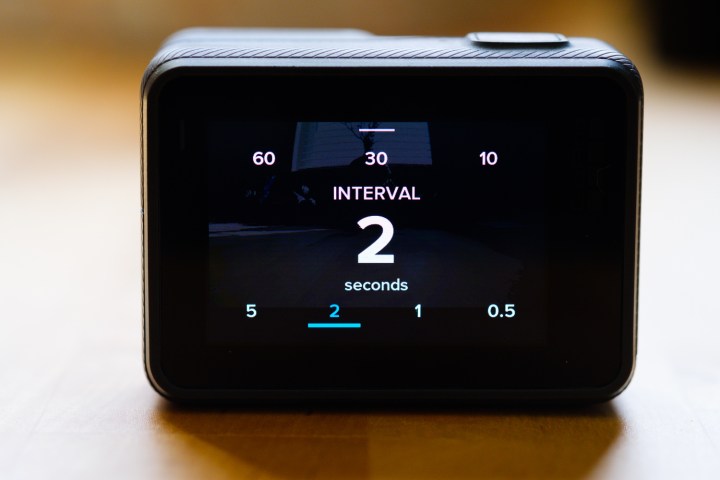
GoPro cameras are known for their video-capture capabilities, but they function as rugged still cameras as well. The last few generations offer different burst and time-lapse modes that can add some unique shots to a video. With burst images, you can stitch the photos (30 frames per second) into a unique action sequence and mix it in between video action. The same can be said about Time Lapse and Night Lapse modes, which create fast-moving animations of a live scene, along with Night Photo, a mode designed for capturing long exposures. If you want your videos to stand out, these photo-based modes can help you do just that.
Plan out a good story
A good story is the backbone of any good video. GoPro itself knows this through and through, with plenty of examples of excellent storytelling on the company’s official YouTube channel. A strong story will grip your audience from start to finish, even if the actual filmmaking techniques are underwhelming. Don’t feel like putting in all the work? GoPro’s Quik app for desktop and mobile will automatically edit your selected clips into a short video, complete with cutting it to music. It can turn even a boring bike ride into something at least partially interesting, as in our sample video above.
For more serious storytellers, before even picking up your camera, try to develop the idea behind what you want to shoot. Maybe it’s just a simple day at the beach or maybe something a bit more complex. Either way, it’s important to start shooting with a clear direction. Write an outline, sketch a storyboard with stick figures, or list out different shots on paper — anything to get your mind focused on the process of creating moments, rather than just sitting back and hoping to record whatever happens. Since we’re talking about GoPro, our best move would be to provide you with all Black Friday GoPro deals, so that you can leverage the Black Friday discounts.
GoPro experts teach the following “shot list” for anyone to get started on creating an effective video: Think of your story with a start, middle, and end. At the beginning, create an “establishing shot” — an overview of the scenery, for example. Next, introduce any characters involved. Then, mix in POV shots, and then ending with a final shot that wraps up the story. And just because it’s called an “action camera” doesn’t mean your story has to involve death-defying stunts, as this touching documentary — entirely shot on GoPro — shows:
If at first you don’t succeed…
Your first time out with a GoPro camera likely won’t be everything you were hoping for, but don’t let that discourage you. Keep working at it, keep trying new things, and keep learning. You’ll discover things that work (and things that don’t) and develop your own personal preferences and style over time. One of the great things about working with a camera as small and as flexible as a GoPro is that it grants you freedom to experiment — so don’t be afraid to try new things.
Editors' Recommendations
- The 15 best GoPro accessories in 2024
- Best GoPro deals: Save on action cameras and accessories
- GoPro Hero 11 Black leak suggests a moderate upgrade
- ReelSteady makes GoPro Player ‘reel’ useful for filmmakers
- GoPro keeps recording as parrot steals it from tourists and flies off





